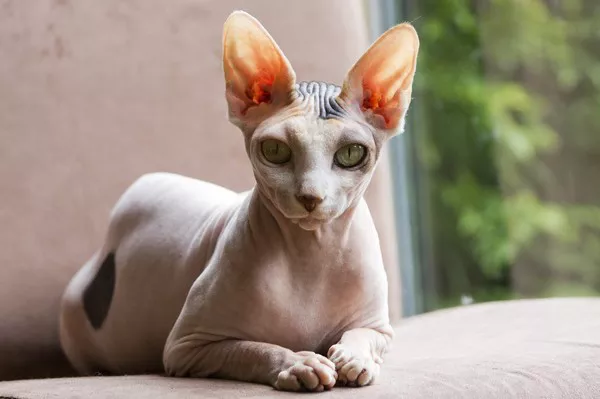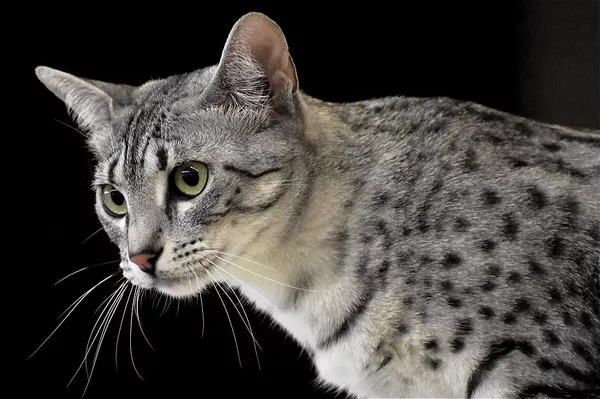Hairless cats, also known as Sphynx cats, are a unique and intriguing breed that draws attention with their lack of fur. Since they don’t have traditional fur to keep them clean, many people wonder if hairless cats require regular baths. In this article, we will explore the bathing needs of hairless cats, the reasons behind it, and provide guidelines for effectively and safely bathing these unique feline companions.
1. Understanding the Skin of Hairless Cats:
Hairless cats have a thin layer of downy fuzz or no hair at all, which makes their sensitive skin more exposed than that of their furry counterparts. Their skin produces natural oils, just like other cat breeds, but without fur to absorb and distribute these oils, they can accumulate on the surface, leading to a greasy feel and potential skin issues. Regular baths help to maintain the cleanliness of their skin and prevent any build-up of oils or debris.
2. Maintaining Hygiene:
One of the primary reasons why hairless cats need baths is to ensure good hygiene. Without fur to trap dirt, dust, and dead skin cells, these substances can accumulate on their skin. Regular baths help remove these impurities, preventing skin irritation, odor, and potential infections. Additionally, regular bathing can minimize the allergens present on their skin, making them a better option for individuals with allergies.
3. Controlling Body Odor:
Hairless cats may develop body odor more easily compared to their furry counterparts. The oil buildup on their skin, combined with sweat and bacteria, can result in an unpleasant odor. Bathing with gentle cat-specific shampoos helps control body odor by removing excess oils and reducing bacterial growth. However, it’s important to note that hairless cats should not be over-bathed, as excessive bathing can strip their skin of essential oils, leading to dryness and skin problems.
4. Dealing with Environmental Factors:
Hairless cats are more susceptible to temperature changes and extreme weather conditions due to their lack of fur. During hot weather, they may sweat more than other cats, resulting in a higher chance of skin issues. Regular baths help in regulating their body temperature and keeping their skin cool and clean. In colder weather, it’s crucial to ensure their skin doesn’t become too dry, so using moisturizing products during baths and applying pet-safe lotions afterward can help prevent dryness and discomfort.
5. Establishing a Bathing Routine:
Developing a regular bathing routine is essential for hairless cats. However, it’s important to note that each cat is unique, and factors like their individual skin type, lifestyle, and environment should be considered when determining the frequency of baths. Generally, a bath every two to four weeks is sufficient for most hairless cats. Using lukewarm water and mild, hypoallergenic cat shampoos formulated specifically for their delicate skin is recommended. It’s crucial to avoid human shampoos or harsh products that can cause irritation or allergic reactions.
6. Bathing Techniques and Tips:
When bathing a hairless cat, certain techniques and tips can make the process easier and less stressful for both you and your feline companion:
Prepare the bathing area: Ensure a safe and warm environment free from drafts. Place a non-slip mat or towel on the floor of the sink or tub to provide stability.
Gently wetting the cat: Use lukewarm water to wet the cat’s body using a handheld spray nozzle or a cup. Be cautious not to spray directly into their ears, eyes, or nose.
Applying shampoo and lathering: Use a small amount of cat-specific shampoo and gently massage it onto their skin, avoiding sensitive areas. Rinse thoroughly to remove all traces of shampoo as residue can cause skin irritation.
Drying: Pat the cat’s skin gently with a soft towel or use a low-heat blow dryer on the lowest setting to dry them. Ensure they are completely dry before letting them roam freely.
Positive reinforcement: Reward your hairless cat with treats, praise, and affection during and after the bath to associate positive experiences with bathing.
7. Monitoring Skin Health:
Regular baths provide an opportunity to monitor the overall health of your hairless cat’s skin. Look for any signs of redness, rashes, lesions, or unusual bumps, as these may indicate underlying skin problems or allergies. If you notice any concerning changes, consult your veterinarian for appropriate guidance and treatment.
Conclusion:
While hairless cats may not have fur, their unique skin requires regular bathing to maintain cleanliness, control body odor, and prevent potential skin issues. By establishing a suitable bathing routine and using gentle products specifically formulated for their delicate skin, you can ensure that your hairless cat remains healthy, comfortable, and happy. Remember to approach bath time with patience, gentleness, and positive reinforcement to make it a stress-free experience for both you and your feline companion.



























